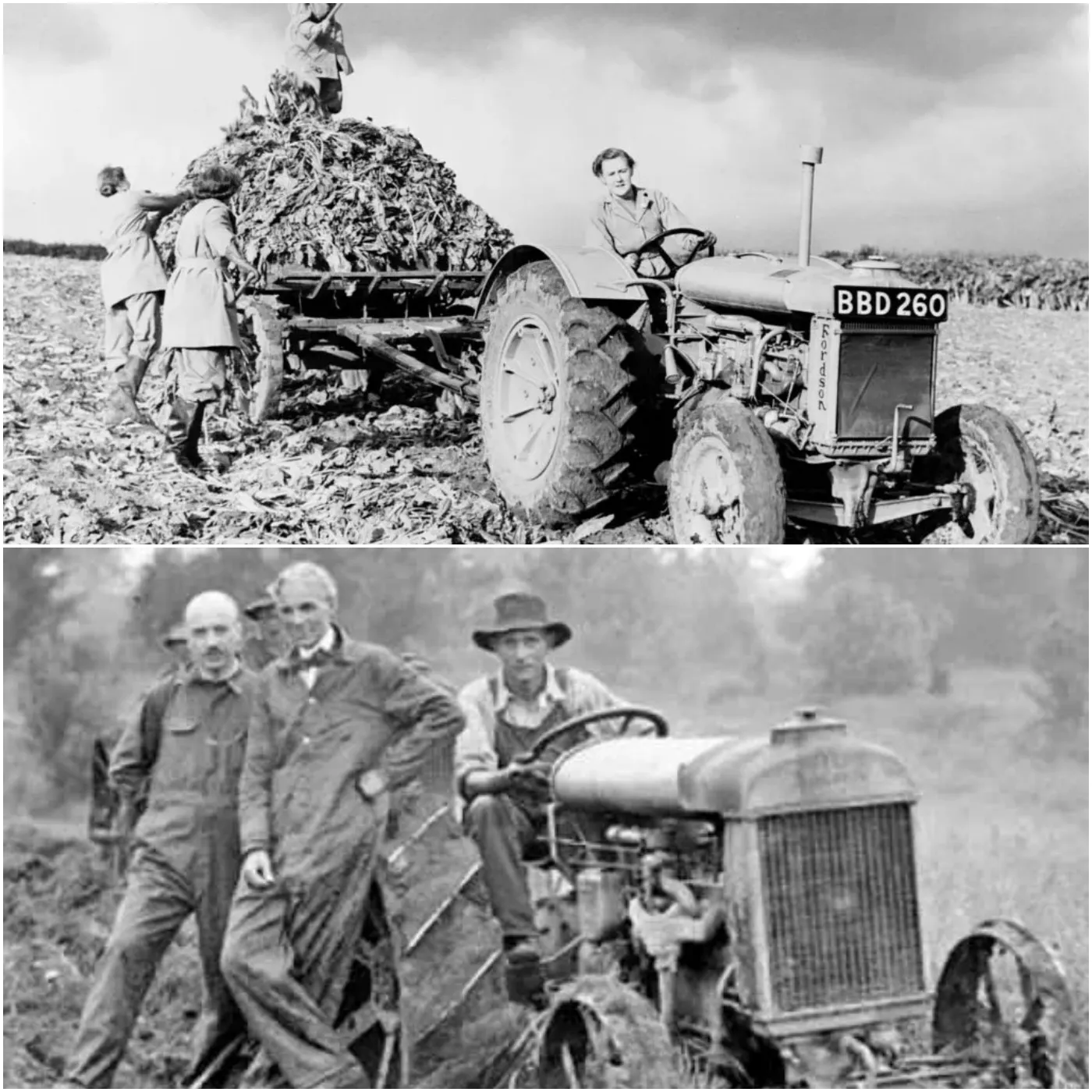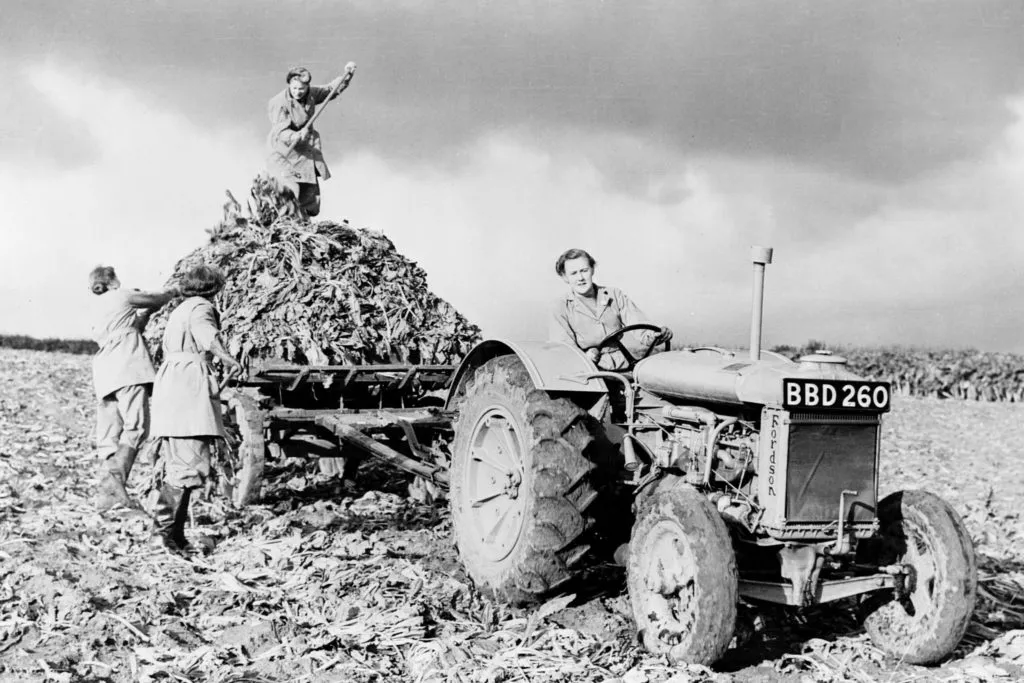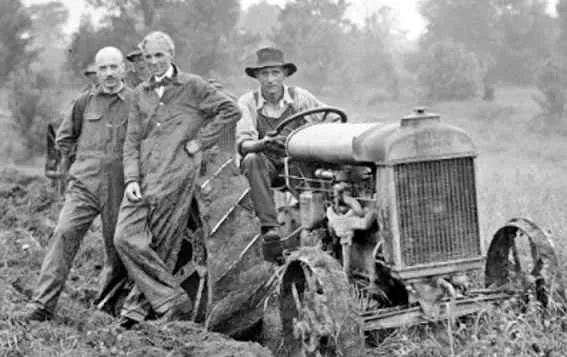During the tumultuous years of World War II, the agricultural landscape faced significant challenges as many men left the fields to join the fight. In this time of need, the Fordson tractor once again proved to be an invaluable asset, playing a crucial role in ensuring food production did not falter. One poignant and powerful image from this era is that of the “Army Girls” harvesting beets from the fields in 1944, a testament to the resilience and adaptability of both technology and human spirit.
The Fordson tractor, originally introduced in the early 20th century, had already established itself as a reliable workhorse on farms across the world. Its innovative design and sturdy build made it an essential tool for farmers looking to increase productivity and efficiency. As the war effort intensified, the demand for food and raw materials grew, and the Fordson tractor was called upon to meet these heightened needs.
With many men enlisted in the military, women stepped up to fill the labor void, joining the Women’s Land Army (WLA) in Britain and similar organizations in other countries. These “Land Girls” or “Army Girls” took on the demanding tasks of planting, tending, and harvesting crops, ensuring that the home front remained well-supplied. The Fordson tractor became a symbol of this collaboration, representing the unity between advanced machinery and the dedicated efforts of these women.
In 1944, as the war reached its critical stages, the image of Army Girls harvesting beets from the fields with the help of Fordson tractors encapsulated the era’s spirit. These women, many of whom had never worked on a farm before, quickly adapted to their new roles. They learned to operate the Fordson tractors with skill and precision, maximizing their output and contributing significantly to the war effort.
The beets they harvested were not just any crops; they were vital for producing sugar, a crucial resource during the war. The efficient and timely harvesting of beets ensured a steady supply of sugar, which was essential for both civilian consumption and military provisions. The Fordson tractor, with its powerful engine and versatile capabilities, made this possible by enabling the women to work more effectively and cover larger areas of farmland.
The collaboration between the Fordson tractors and the Army Girls was a remarkable example of wartime innovation and determination. It highlighted the critical role of technology in supporting human endeavors, especially in times of crisis. The sight of these women operating the tractors with confidence and competence also challenged traditional gender roles, paving the way for greater acceptance of women in various labor sectors post-war.
Today, the legacy of the Fordson tractor and the Army Girls lives on as a powerful reminder of resilience, adaptability, and the collective effort required during challenging times. Their story is a testament to how innovation and human spirit can come together to overcome adversity, ensuring that even in the darkest times, progress and productivity can prevail.
As we look back on the contributions of the Fordson tractors and the women who operated them, we are reminded of the importance of unity and determination. Their efforts not only helped secure victory during the war but also laid the groundwork for future advancements in agriculture and women’s roles in the workforce. The image of Army Girls harvesting beets in 1944 remains an enduring symbol of courage, hard work, and the unbreakable spirit of those who rise to the occasion when the world needs them most.





